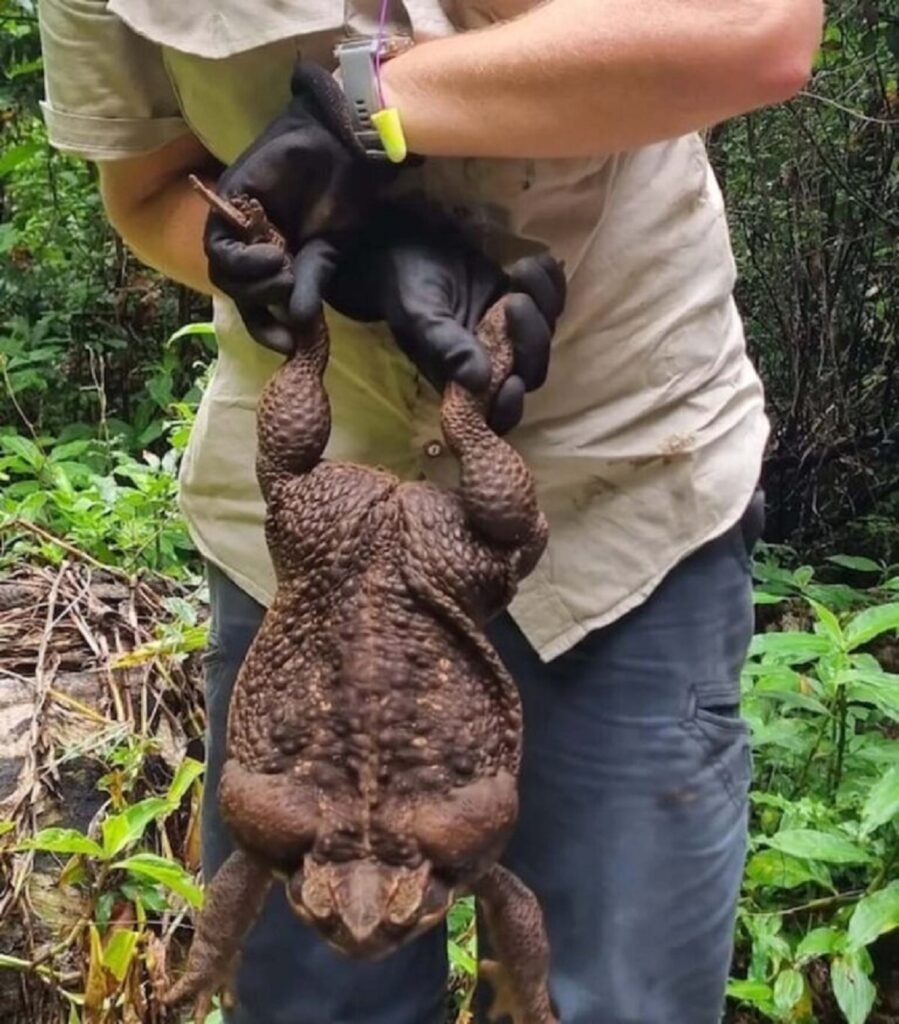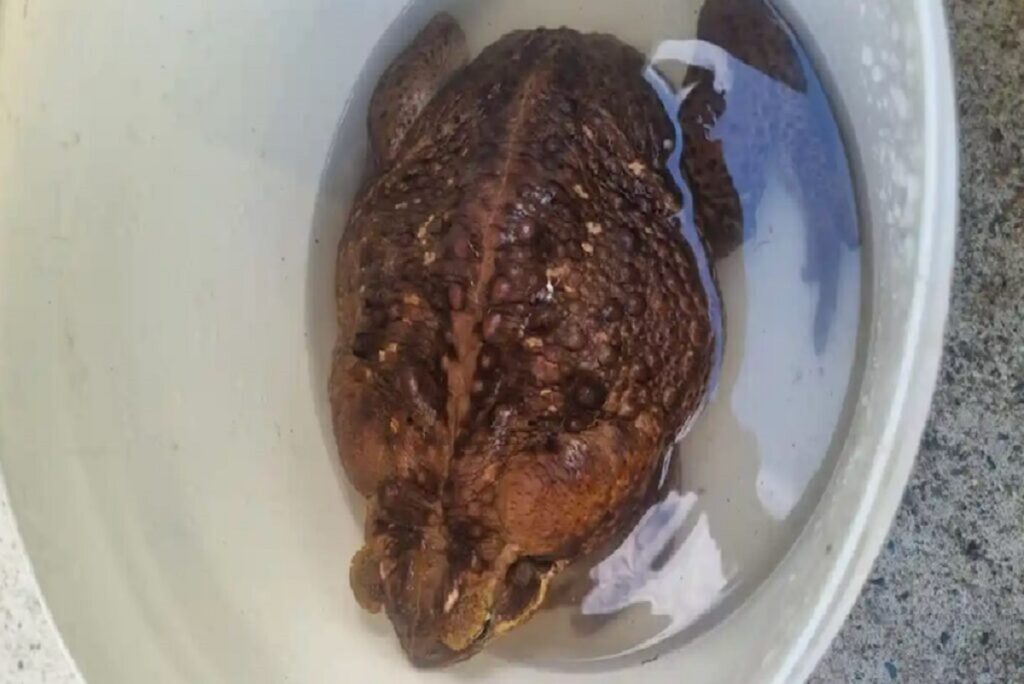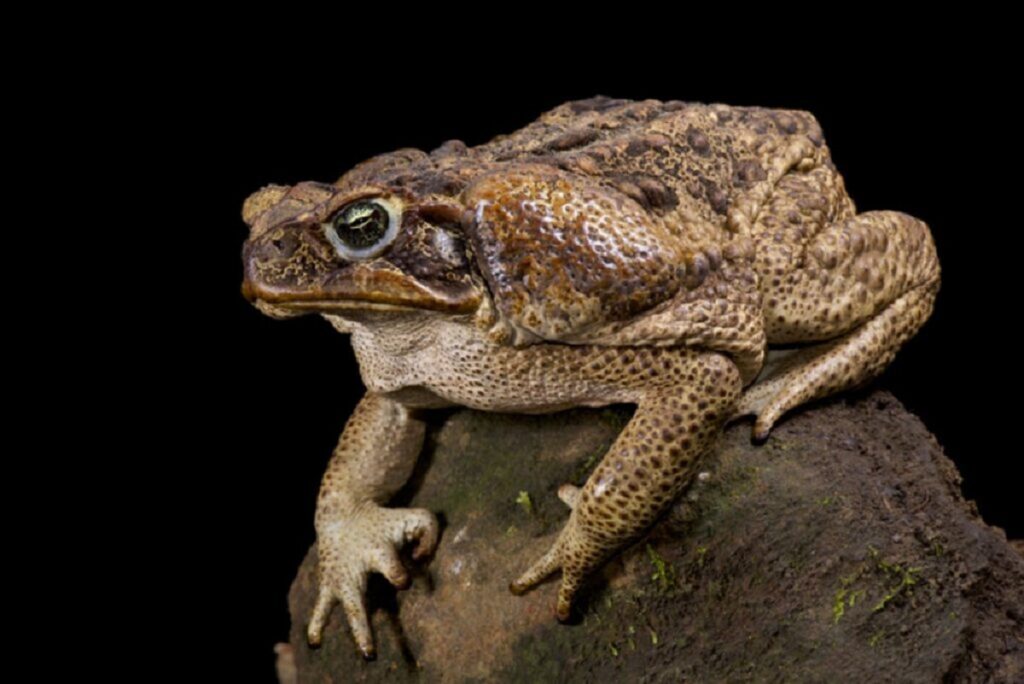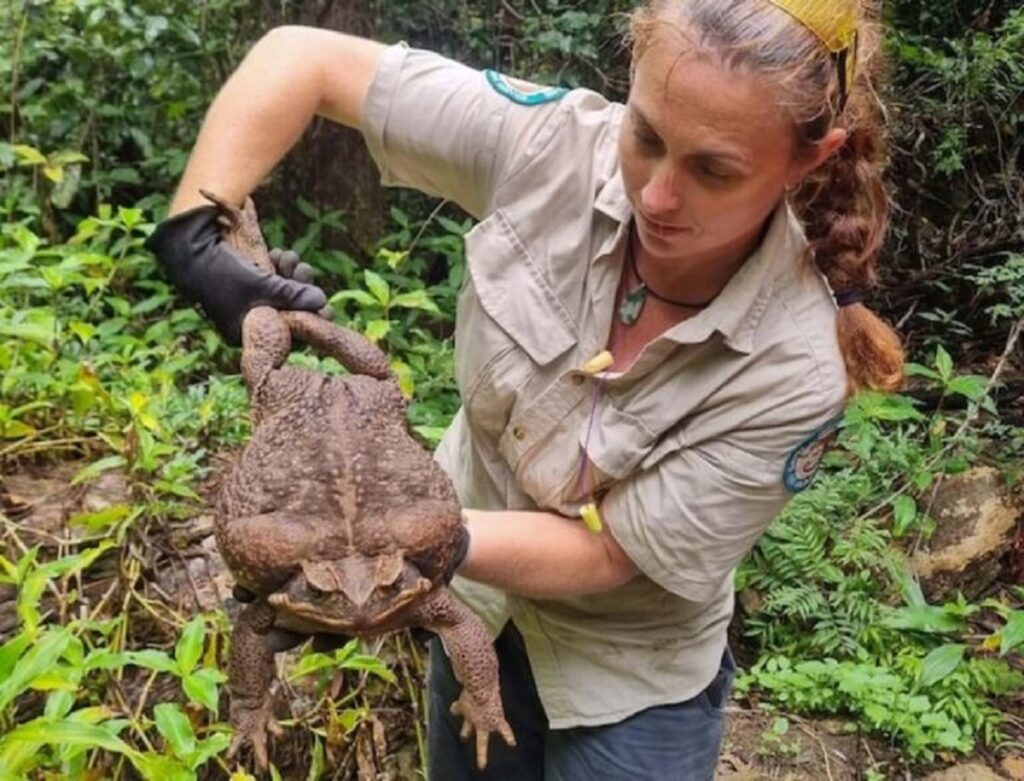In the lush expanses of Queensland’s Conway National Park, Australian forest rangers recently made a discovery that left them astounded: an enormous cane toad, unlike any they had seen before.
Kylee Gray, a wildlife protection officer, was taken aback by the size of the amphibian. “When I bent down and picked up the toad, its sheer weight and bulk were unbelievable,” she told the Australian Broadcasting Corporation.
A Specimen Beyond Compare

Nicknamed “Toadzilla” by the media, this remarkable specimen weighed 2.7 kilograms, surpassing the previous record holder by 50 grams according to the Guinness World Records. For context, Toadzilla was six times larger than the average cane toad.
Gray explained that the toad had developed an insatiable appetite, feeding on insects, reptiles, and small mammals. “A cane toad of this size eats anything that fits into its mouth,” she noted.
The Invasive Cane Toad Species

Many might not know that the cane toad, also called the bufo toad or sugar cane toad, is an invasive species in Australia. Introduced to Queensland in 1935 to control beetle populations, these toads have since become a significant threat to local wildlife. Their rapid reproduction and toxic secretions disrupt the ecosystem.
Female cane toads are especially prolific, laying between 25,000 to 35,000 eggs in a single breeding season. Their toxic skin can harm predators such as lizards, snakes, mice, and even other frogs.
Decision to Euthanize

Considering the ecological dangers posed by Toadzilla and its status as an invasive species, the rangers decided to euthanize the giant toad. But Toadzilla’s story doesn’t end there. Gray mentioned that the toad would be sent to the Queensland Museum for further study.
While the discovery of Toadzilla is fascinating, it highlights the ongoing battle against invasive species and underscores the need for continued biodiversity conservation efforts to protect fragile ecosystems.

